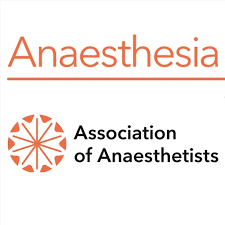Study: GLP-1 weight-loss drugs raise postoperative infection rates

Editor's Note Patients prescribed a glucagon-like peptide-1 agonist (GLP-1) showed higher postoperative infection rates after ankle-fusion procedures in a study presented at the annual meeting of the American Orthopaedic Foot & Ankle Society. Healio reported the news September 20. Conducted by a team at the Milton S. Hershey Medical…
Study: COVID-19 boosts risk of postoperative complications, longer hospital stays for emergency surgery patients

Editor's Note A recent study conducted at a tertiary care hospital in India showed concurrent COVID-19 infection on patients undergoing emergency surgery resulted in notably longer hospital stays and higher rates of postoperative complications. Published September 8 in Cureus, the retrospective cohort study analyzed data from 48 COVID-19-positive patients and…
Study: Preoperative depression boosts risk of postoperative delirium

Editor's Note Patients with depressive symptoms are nearly twice as likely to experience delirium after major surgery, according to a meta-analysis published September 4 in the journal Anaesthesia. The evaluation of the link between preoperative depression and postoperative delirium included data from 42 studies involving more than 4.6 million patients.…
Study: Postoperative potassium risk overstated for cardiac bypass patients

Editor's Note The common practice of administering potassium after bypass surgery can be safely abandoned in patients with normal blood levels, according to results of the randomized TIGHT-K trial. According to a September 3 report in Medscape, potassium supplementation is a widely accepted means of reducing the risk of postoperative…
Study: Women face higher mortality risk than men for postop atrial fibrillation after cardiac surgery

Editor's Note A recent study from two tertiary care centers highlighted significant sex differences in long-term outcomes after cardiac surgery, especially concerning postoperative atrial fibrillation (postopAF), MedPage August 21 reports. The study, published in JAMA Network, found that while women were less likely than men to develop postopAF following a…
‘Surgical pause’ saving lives, expanding beyond VA hospitals

Editor's Note The “surgical pause”—a means of validating whether surgery is truly safe for patients deemed to be “frail” before starting a procedure—significantly reduces mortality rates and is changing practices at more than 50 Veterans Administration (VA) hospitals, the Pittsburgh Post-Gazette reported August 18. Developed by VA surgeons Daniel Hall…
Handheld, powered surgical tools combine advantages of traditional laparoscopy, robotics

Editor's Note Combining dexterity and cost-effectiveness, handheld robotic devices offer potential to bridge the gap between traditional laparoscopy and more expensive robotic platforms, researchers concluded August 8 in the journal Surgery. The mini-review of clinical trials covered clinical applications of three handheld robotic devices: the HandX powered laparoscopic instrument from…
Study reveals low rate of unplanned hospital admissions after ambulatory surgery

Editor's Note A recent study, published by Perioperative Medicine on August 13 and conducted at a large US academic tertiary care ambulatory surgery center (ASC), found the incidence of unplanned hospital admissions within 24 hours after a procedure performed at an ASC is “exceptionally” low. The research, which analyzed data…
Study reveals how OR ventilation, patient positioning impact surgical site infection risk

Editor's Note Optimizing patient positioning can help reduce the risk of surgical site infections due to airborne contaminants in positive-pressure ORs, according to a study published August 12 in Nature: Scientific Reports. Maintaining higher pressure than adjacent spaces prevents entry of contaminants from environments external to the OR. For this…
Study: COVID infection negatively impacts surgical outcomes

Symptomatic SARS-COV-2 patients undergoing surgical procedures experience significantly higher 30-day in-hospital mortality, ICU admission, longer ICU and hospital stay, and pulmonary complications, according to a study published August 1 in the Journal of PeriAnesthesia Nursing. Researchers analyzed a year’s worth of records of 102 infected surgical patients and those who…

 Free Daily News
Free Daily News